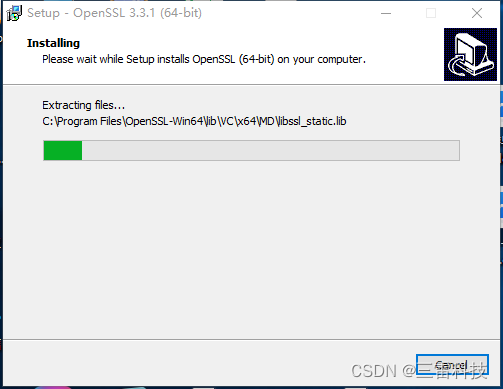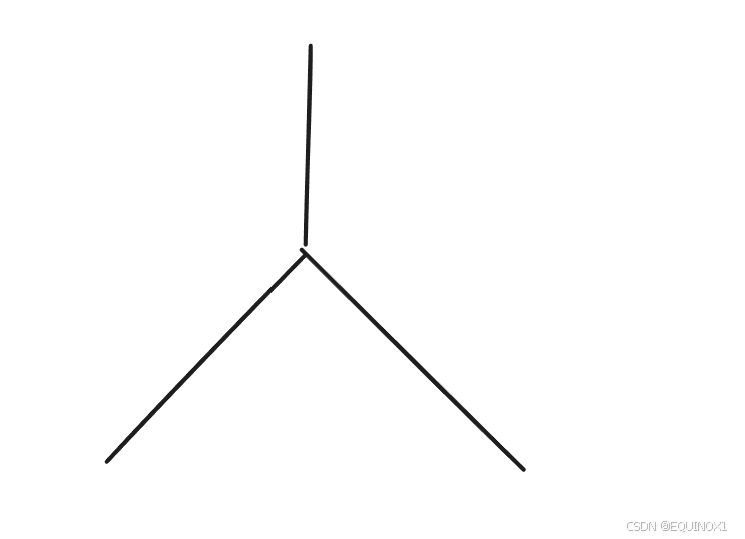文章目录
- 1、GPU介绍
- 2、CUDA程序进行编译
- 3、CUDA线程模型
- 3.1、一维网格一维线程块
- 3.2、二维网格二维线程块
- 3.3、三维网格三维线程块
- 3.3、不同组合形式
- 4、nvcc编译流程
- 5、CUDA程序基本架构
- 6、错误检测函数
- 6.1、运行时API错误代码
- 6.2、检查核函数
- 7、CUDA记时
- 7.1、记时代码
- 7.2、核函数记时实例
- 7.3、nvprof性能刨析
- 7.4、运行时API查询GPU信息
- 7.5、查询GPU计算核心数量
- 8、组织线程模型
- 8.1、一维网格一维线程块计算二维矩阵加法
- 8.2、二维网格一维线程块计算二维矩阵加法
- 8.3、二维网格二维线程块计算二维矩阵加法
- 9、内存结构
1、GPU介绍
参考链接
GPU 意为图形处理器,也常被称为显卡,GPU最早主要是进行图形处理的。如今深度学习大火,GPU高效的并行计算能力充分被发掘,GPU在AI应用上大放异彩。GPU拥有更多的运算核心,其特别适合数据并行的计算密集型任务,如大型矩阵运算,与GPU对应的一个概念是CPU,但CPU的运算核心较少,但是其可以实现复杂的逻辑运算,因此其适合控制密集型任务,CPU更擅长数据缓存和流程控制。
1、GPU不能单独进行工作,GPU相当于CPU的协处理器,由CPU进行调度。CPU+GPU组成异构计算架构,CPU的特点是更加擅长逻辑处理,而对大量数据的运算就不是那么擅长了,GPU恰好相反,GPU可以并行处理大量数据运算。

2、CUDA运行时API
CUDA提供两层API接口,CUDA驱动(driver)API和CUDA运行时(runtime)API;
两种API调用性能几乎无差异,课程使用操作对用户更加友好Runtime API;

3、第一个CUDA程序
#include <stdio.h>
__global__ void hello_from_gpu()
{
printf("Hello World from the the GPU\n");
}
int main(void)
{
hello_from_gpu<<<4, 4>>>();
cudaDeviceSynchronize();
return 0;
}
2、CUDA程序进行编译
通过nvidia-smi 查看当前显卡信息

使用nvcc对cuda代码进行编译
nvcc test1.cu -o test1
// 1、
// 核函数 在GPU上进行并执行
// 注意:限定词__global__
// 返回值必须是void
// 两种都是正确的
// 形式1:__global__ void
// 形式2:__global__ void
__global__ void hello_from_gpu()
{
const int bid = blockIdx.x;
const int tid = threadIdx.x;
const int id = threadIdx.x + blockIdx.x * blockDim.x;
printf("hello world from the GPU block:%d and thread:%d,global id:%d\n",bid,tid,id);
}
int main()
{
// 指定线程模型
// 第一个指的是线程块的个数,第二个指的每个线程块线程的数量
hello_from_gpu<<<4,4>>>();
// 因为GPU是CPU的协调处理器,所以需要处理主机与设备直接的同步
cudaDeviceSynchronize();
return 0;
}

3、CUDA线程模型
3.1、一维网格一维线程块
当一个核函数在主机中启动时,他所有的线程构成了一个网格(grid)包含多个线程块(block)包含多个线程,线程是GPU中最小单位
<<<4,4>>> 表示gird中线程块的个数,block中线程数



#include <stdio.h>
__global__ void hello_from_gpu()
{
const int bid = blockIdx.x;
const int tid = threadIdx.x;
const int id = threadIdx.x + blockIdx.x * blockDim.x;
printf("Hello World from block %d and thread %d, global id %d\n", bid, tid, id);
}
int main(void)
{
printf("Hello World from CPU!\n");
hello_from_gpu<<<2, 2>>>();
cudaDeviceSynchronize();
return 0;
}
3.2、二维网格二维线程块






3.3、三维网格三维线程块

3.3、不同组合形式



4、nvcc编译流程
nvcc编译流程:需要注意的是,GPU的真实架构能力需要大于虚拟架构能力。








5、CUDA程序基本架构








使用GPU进行矩阵计算
#include <stdio.h>
int setGPU()
{
int idevcount = 0;
cudaError_t error = cudaGetDeviceCount(&idevcount);
if(error != cudaSuccess || error == 0)
{
printf("No found GPU\n");
exit(-1);
}
else
{
printf("The count of GPU is :%d.\n",idevcount);
}
// 设置执行GPU
int idev = 0;
error = cudaSetDevice(idev);
if(error != cudaSuccess)
{
printf("fail set device 0 GPU\n");
exit(-1);
}
else
{
printf("set GPU 0 for computing\n");
}
return 0;
}
// 初始化函数
void initdata(float *addr,int element)
{
for(int i = 0;i<element;i++)
{
addr[i] = (float)(rand() & 0xFF) / 10.f;
}
return;
}
// 使用设备函数
__device__ float add(float a, float b)
{
return a+b;
}
// 核函数
__global__ void addFromGPU(float *a, float *b, float *c, const int n)
{
const int bid = blockIdx.x;
const int tid = threadIdx.x;
const int id = tid + bid * blockDim.x;
// 当513的时候,32*17 =544个线程,所以需要限制一下
// c[id] = a[id] + b[id];
if(id>n) return;
c[id] = add(a[id]+b[id]);
}
int main1()
{
// 1、设置GPU设备
setGPU();
// 2、分配主机内存和设备内存,并初始化
int ielement = 513; // 设置元素个数
size_t stBytescount = ielement * sizeof(float); // 字节数
// 分配主机内存,并初始化
float *fphost_a,*fphost_b,*fphost_c;
fphost_a = (float*)malloc(stBytescount);
fphost_b = (float*)malloc(stBytescount);
fphost_c = (float*)malloc(stBytescount);
if(fphost_a != NULL && fphost_b != NULL && fphost_c != NULL)
{
memset(fphost_a,0x00,stBytescount);
memset(fphost_b,0x00,stBytescount);
memset(fphost_c,0x00,stBytescount);
}
else
{
printf("fail to allocate host memory\n");
exit(-1);
}
// 分配设备内存
float *fpdevice_a,*fpdevice_b,*fpdevice_c;
cudaMalloc((float**)&fpdevice_a,stBytescount);
cudaMalloc((float**)&fpdevice_b,stBytescount);
cudaMalloc((float**)&fpdevice_c,stBytescount);
if(fpdevice_a != NULL && fpdevice_b != NULL && fpdevice_c != NULL)
{
cudaMemset(fpdevice_a,0,stBytescount);
cudaMemset(fpdevice_b,0,stBytescount);
cudaMemset(fpdevice_c,0,stBytescount);
}
else
{
printf("fail to allocate device memory\n");
free(fphost_a);
free(fphost_b);
free(fphost_c);
exit(-1);
}
// 初始化随即种子
srand(666);
initdata(fphost_a,ielement);
initdata(fphost_b,ielement);
// 数据从主机中拷贝到设备中
cudaMemcpy(fpdevice_a,fphost_a,stBytescount,cudaMemcpyHostToDevice);
cudaMemcpy(fpdevice_b,fphost_b,stBytescount,cudaMemcpyHostToDevice);
cudaMemcpy(fpdevice_c,fphost_c,stBytescount,cudaMemcpyHostToDevice);
// 掉用核函数在设备中进行计算
dim3 block(32);
dim3 grid(ielement/32);
// 掉用核函数
addFromGPU<<<grid,block>>>(fpdevice_a,fpdevice_b,fpdevice_c,ielement);
cudaDeviceSynchronize();
// 将计算的到的数据从设备拷贝到主机中(隐式同步)
cudaMemcpy(fphost_c,fpdevice_c,stBytescount,cudaMemcpyDeviceToHost);
for(int i=0;i<10;i++)
{
printf("idx=%2d\tmatrix_a:%.2f\tmatrix_b:%.2f\tresult=%.2f\n",fphost_a[i],fphost_b[i],fphost_c[i]);
}
// 释放内存
free(fphost_a);
free(fphost_b);
free(fphost_c);
cudaFree(fpdevice_a);
cudaFree(fpdevice_b);
cudaFree(fpdevice_c);
cudaDeviceReset();
return 0;
}
6、错误检测函数
6.1、运行时API错误代码
CUDA运行时API大多支持返回错误代码,返回值类型为cudaError_t,前面的例子我们也已经讲解过,CUDA运行时API成功执行,返回的错误代码为cudaSuccess,运行时API返回的执行状态值是枚举变量。


#pragma once
#include <stdlib.h>
#include <stdio.h>
cudaError_t ErrorCheck(cudaError_t error_code, const char* filename, int lineNumber)
{
if (error_code != cudaSuccess)
{
printf("CUDA error:\r\ncode=%d, name=%s, description=%s\r\nfile=%s, line%d\r\n",
error_code, cudaGetErrorName(error_code), cudaGetErrorString(error_code), filename, lineNumber);
return error_code;
}
return error_code;
}
调用错误检测函数:
cudaError_t error = ErrorCheck(cudaSetDevice(iDev), FILE, LINE);
6.2、检查核函数
错误检查函数无法捕捉调用核函数时发生的相关错误,前面也讲到过,核函数的返回值类型时void,即核函数不返回任何值。可以通过在调用核函数之后调用**cudaGetLastError()**函数捕捉核函数错误。
获取cuda程序的最后一个错误—cudaGetLastError

在调用核函数后,追加如下代码:
ErrorCheck(cudaGetLastError(), __FILE__, __LINE__);
ErrorCheck(cudaDeviceSynchronize(), __FILE__, __LINE__);
7、CUDA记时
通常情况下不仅要关注程序的正确性,还要关注程序的性能(即执行速度)。了解核函数的执行需要多长时间是很有必要的,想要掌握程序的性能,就需要对程序进行精确的记时。
7.1、记时代码
CUDA事件记时代码如下,只需要将需要记时的代码嵌入记时代码之间:
cudaEvent_t start, stop;
ErrorCheck(cudaEventCreate(&start), __FILE__, __LINE__);
ErrorCheck(cudaEventCreate(&stop), __FILE__, __LINE__);
ErrorCheck(cudaEventRecord(start), __FILE__, __LINE__);
cudaEventQuery(start); //此处不可用错误检测函数
/************************************************************
需要记时间的代码
************************************************************/
ErrorCheck(cudaEventRecord(stop), __FILE__, __LINE__);
ErrorCheck(cudaEventSynchronize(stop), __FILE__, __LINE__);
float elapsed_time;
ErrorCheck(cudaEventElapsedTime(&elapsed_time, start, stop), __FILE__, __LINE__);
printf("Time = %g ms.\n", elapsed_time);
ErrorCheck(cudaEventDestroy(start), __FILE__, __LINE__);
ErrorCheck(cudaEventDestroy(stop), __FILE__, __LINE__);
代码解析:
第1行cudaEvent_t start, stop:定义两个CUDA事件类型(cudaEvent_t)的变量;
第2、3行cudaEventCreate函数初始化定义的cudaEvent_t变量;
第4行通过cudaEventRecord函数,在需要记时的代码块之前记录代表时间开始的事件;
第5行cudaEventQuery函数在TCC驱动模式的GPU下可省略,但在处于WDDM驱动模式的GPU必须保留,因此,我们就一直保留这句函数即可。注意:cudaEventQuery函数不可使用错误检测函数;
第8行是需要记时的代码块;
第11行在需要记时的代码块之后记录代表时间结束的事件;
第12行cudaEventSynchronize函数作用是让主机等待事件stop被记录完毕;
第13~15行cudaEventElapsedTime函数的调用作用是计算cudaEvent_t变量start和stop时间差,记录在float变量elapsed_time中,并输出打印到屏幕上;
第17、18行调用cudaEventDestroy函数销毁start和stop这两个类型为cudaEvent_t的CUDA事件。
7.2、核函数记时实例
此代码计算运行核函数10次的平均时间,核函数实际运行11次,由于第一次调用核函数,往往会花费更多的时间,如果将第一次记录进去,可能导致记录的时间不准确,因此忽略第一次调用核函数的时间,取10次平均值。
#include <stdio.h>
#include "../tools/common.cuh"
#define NUM_REPEATS 10
__device__ float add(const float x, const float y)
{
return x + y;
}
__global__ void addFromGPU(float *A, float *B, float *C, const int N)
{
const int bid = blockIdx.x;
const int tid = threadIdx.x;
const int id = tid + bid * blockDim.x;
if (id >= N) return;
C[id] = add(A[id], B[id]);
}
void initialData(float *addr, int elemCount)
{
for (int i = 0; i < elemCount; i++)
{
addr[i] = (float)(rand() & 0xFF) / 10.f;
}
return;
}
int main(void)
{
// 1、设置GPU设备
setGPU();
// 2、分配主机内存和设备内存,并初始化
int iElemCount = 4096; // 设置元素数量
size_t stBytesCount = iElemCount * sizeof(float); // 字节数
// (1)分配主机内存,并初始化
float *fpHost_A, *fpHost_B, *fpHost_C;
fpHost_A = (float *)malloc(stBytesCount);
fpHost_B = (float *)malloc(stBytesCount);
fpHost_C = (float *)malloc(stBytesCount);
if (fpHost_A != NULL && fpHost_B != NULL && fpHost_C != NULL)
{
memset(fpHost_A, 0, stBytesCount); // 主机内存初始化为0
memset(fpHost_B, 0, stBytesCount);
memset(fpHost_C, 0, stBytesCount);
}
else
{
printf("Fail to allocate host memory!\n");
exit(-1);
}
// (2)分配设备内存,并初始化
float *fpDevice_A, *fpDevice_B, *fpDevice_C;
ErrorCheck(cudaMalloc((float**)&fpDevice_A, stBytesCount), __FILE__, __LINE__);
ErrorCheck(cudaMalloc((float**)&fpDevice_B, stBytesCount), __FILE__, __LINE__);
ErrorCheck(cudaMalloc((float**)&fpDevice_C, stBytesCount), __FILE__, __LINE__);
if (fpDevice_A != NULL && fpDevice_B != NULL && fpDevice_C != NULL)
{
ErrorCheck(cudaMemset(fpDevice_A, 0, stBytesCount), __FILE__, __LINE__); // 设备内存初始化为0
ErrorCheck(cudaMemset(fpDevice_B, 0, stBytesCount), __FILE__, __LINE__);
ErrorCheck(cudaMemset(fpDevice_C, 0, stBytesCount), __FILE__, __LINE__);
}
else
{
printf("fail to allocate memory\n");
free(fpHost_A);
free(fpHost_B);
free(fpHost_C);
exit(-1);
}
// 3、初始化主机中数据
srand(666); // 设置随机种子
initialData(fpHost_A, iElemCount);
initialData(fpHost_B, iElemCount);
// 4、数据从主机复制到设备
ErrorCheck(cudaMemcpy(fpDevice_A, fpHost_A, stBytesCount, cudaMemcpyHostToDevice), __FILE__, __LINE__);
ErrorCheck(cudaMemcpy(fpDevice_B, fpHost_B, stBytesCount, cudaMemcpyHostToDevice), __FILE__, __LINE__);
ErrorCheck(cudaMemcpy(fpDevice_C, fpHost_C, stBytesCount, cudaMemcpyHostToDevice), __FILE__, __LINE__);
// 5、调用核函数在设备中进行计算
dim3 block(32);
dim3 grid((iElemCount + block.x - 1) / 32);
float t_sum = 0;
for (int repeat = 0; repeat <= NUM_REPEATS; ++repeat)
{
cudaEvent_t start, stop;
ErrorCheck(cudaEventCreate(&start), __FILE__, __LINE__);
ErrorCheck(cudaEventCreate(&stop), __FILE__, __LINE__);
ErrorCheck(cudaEventRecord(start), __FILE__, __LINE__);
cudaEventQuery(start); //此处不可用错误检测函数
addFromGPU<<<grid, block>>>(fpDevice_A, fpDevice_B, fpDevice_C, iElemCount); // 调用核函数
ErrorCheck(cudaEventRecord(stop), __FILE__, __LINE__);
ErrorCheck(cudaEventSynchronize(stop), __FILE__, __LINE__);
float elapsed_time;
ErrorCheck(cudaEventElapsedTime(&elapsed_time, start, stop), __FILE__, __LINE__);
// printf("Time = %g ms.\n", elapsed_time);
if (repeat > 0)
{
t_sum += elapsed_time;
}
ErrorCheck(cudaEventDestroy(start), __FILE__, __LINE__);
ErrorCheck(cudaEventDestroy(stop), __FILE__, __LINE__);
}
const float t_ave = t_sum / NUM_REPEATS;
printf("Time = %g ms.\n", t_ave);
// 6、将计算得到的数据从设备传给主机
ErrorCheck(cudaMemcpy(fpHost_C, fpDevice_C, stBytesCount, cudaMemcpyDeviceToHost), __FILE__, __LINE__);
// 7、释放主机与设备内存
free(fpHost_A);
free(fpHost_B);
free(fpHost_C);
ErrorCheck(cudaFree(fpDevice_A), __FILE__, __LINE__);
ErrorCheck(cudaFree(fpDevice_B), __FILE__, __LINE__);
ErrorCheck(cudaFree(fpDevice_C), __FILE__, __LINE__);
ErrorCheck(cudaDeviceReset(), __FILE__, __LINE__);
return 0;
}
7.3、nvprof性能刨析
1、nvprof工具说明
CUDA 5.0后有一个工具叫做nvprof的命令行分析工具,nvprof是一个可执行文件。
如下执行命令语句,其中exe_name为可执行文件的名字。
nvprof ./exe_name
#include <stdio.h>
#include "../tools/common.cuh"
#define NUM_REPEATS 10
__device__ float add(const float x, const float y)
{
return x + y;
}
__global__ void addFromGPU(float *A, float *B, float *C, const int N)
{
const int bid = blockIdx.x;
const int tid = threadIdx.x;
const int id = tid + bid * blockDim.x;
if (id >= N) return;
C[id] = add(A[id], B[id]);
}
void initialData(float *addr, int elemCount)
{
for (int i = 0; i < elemCount; i++)
{
addr[i] = (float)(rand() & 0xFF) / 10.f;
}
return;
}
int main(void)
{
// 1、设置GPU设备
setGPU();
// 2、分配主机内存和设备内存,并初始化
int iElemCount = 4096; // 设置元素数量
size_t stBytesCount = iElemCount * sizeof(float); // 字节数
// (1)分配主机内存,并初始化
float *fpHost_A, *fpHost_B, *fpHost_C;
fpHost_A = (float *)malloc(stBytesCount);
fpHost_B = (float *)malloc(stBytesCount);
fpHost_C = (float *)malloc(stBytesCount);
if (fpHost_A != NULL && fpHost_B != NULL && fpHost_C != NULL)
{
memset(fpHost_A, 0, stBytesCount); // 主机内存初始化为0
memset(fpHost_B, 0, stBytesCount);
memset(fpHost_C, 0, stBytesCount);
}
else
{
printf("Fail to allocate host memory!\n");
exit(-1);
}
// (2)分配设备内存,并初始化
float *fpDevice_A, *fpDevice_B, *fpDevice_C;
ErrorCheck(cudaMalloc((float**)&fpDevice_A, stBytesCount), __FILE__, __LINE__);
ErrorCheck(cudaMalloc((float**)&fpDevice_B, stBytesCount), __FILE__, __LINE__);
ErrorCheck(cudaMalloc((float**)&fpDevice_C, stBytesCount), __FILE__, __LINE__);
if (fpDevice_A != NULL && fpDevice_B != NULL && fpDevice_C != NULL)
{
ErrorCheck(cudaMemset(fpDevice_A, 0, stBytesCount), __FILE__, __LINE__); // 设备内存初始化为0
ErrorCheck(cudaMemset(fpDevice_B, 0, stBytesCount), __FILE__, __LINE__);
ErrorCheck(cudaMemset(fpDevice_C, 0, stBytesCount), __FILE__, __LINE__);
}
else
{
printf("fail to allocate memory\n");
free(fpHost_A);
free(fpHost_B);
free(fpHost_C);
exit(-1);
}
// 3、初始化主机中数据
srand(666); // 设置随机种子
initialData(fpHost_A, iElemCount);
initialData(fpHost_B, iElemCount);
// 4、数据从主机复制到设备
ErrorCheck(cudaMemcpy(fpDevice_A, fpHost_A, stBytesCount, cudaMemcpyHostToDevice), __FILE__, __LINE__);
ErrorCheck(cudaMemcpy(fpDevice_B, fpHost_B, stBytesCount, cudaMemcpyHostToDevice), __FILE__, __LINE__);
ErrorCheck(cudaMemcpy(fpDevice_C, fpHost_C, stBytesCount, cudaMemcpyHostToDevice), __FILE__, __LINE__);
// 5、调用核函数在设备中进行计算
dim3 block(32);
dim3 grid((iElemCount + block.x - 1) / 32);
addFromGPU<<<grid, block>>>(fpDevice_A, fpDevice_B, fpDevice_C, iElemCount); // 调用核函数
// 6、将计算得到的数据从设备传给主机
ErrorCheck(cudaMemcpy(fpHost_C, fpDevice_C, stBytesCount, cudaMemcpyDeviceToHost), __FILE__, __LINE__);
// 7、释放主机与设备内存
free(fpHost_A);
free(fpHost_B);
free(fpHost_C);
ErrorCheck(cudaFree(fpDevice_A), __FILE__, __LINE__);
ErrorCheck(cudaFree(fpDevice_B), __FILE__, __LINE__);
ErrorCheck(cudaFree(fpDevice_C), __FILE__, __LINE__);
ErrorCheck(cudaDeviceReset(), __FILE__, __LINE__);
return 0;
}
nvprof ./nvprofAnalysis
主要看GPU activities:
[CUDA memcpy HtoD]:主机向设备拷贝数据花费时间占比44.98%;
[CUDA memset]:设备调用cudaMemset函数初始化数据占用时间占比23.76%;
核函数执行占比为18.81%;
[CUDA memcpy DtoH]:设备向主机拷贝数据花费时间占比12.14%;

7.4、运行时API查询GPU信息

#include "../tools/common.cuh"
#include <stdio.h>
int main(void)
{
int device_id = 0;
ErrorCheck(cudaSetDevice(device_id), __FILE__, __LINE__);
cudaDeviceProp prop;
ErrorCheck(cudaGetDeviceProperties(&prop, device_id), __FILE__, __LINE__);
printf("Device id: %d\n",
device_id);
printf("Device name: %s\n",
prop.name);
printf("Compute capability: %d.%d\n",
prop.major, prop.minor);
printf("Amount of global memory: %g GB\n",
prop.totalGlobalMem / (1024.0 * 1024 * 1024));
printf("Amount of constant memory: %g KB\n",
prop.totalConstMem / 1024.0);
printf("Maximum grid size: %d %d %d\n",
prop.maxGridSize[0],
prop.maxGridSize[1], prop.maxGridSize[2]);
printf("Maximum block size: %d %d %d\n",
prop.maxThreadsDim[0], prop.maxThreadsDim[1],
prop.maxThreadsDim[2]);
printf("Number of SMs: %d\n",
prop.multiProcessorCount);
printf("Maximum amount of shared memory per block: %g KB\n",
prop.sharedMemPerBlock / 1024.0);
printf("Maximum amount of shared memory per SM: %g KB\n",
prop.sharedMemPerMultiprocessor / 1024.0);
printf("Maximum number of registers per block: %d K\n",
prop.regsPerBlock / 1024);
printf("Maximum number of registers per SM: %d K\n",
prop.regsPerMultiprocessor / 1024);
printf("Maximum number of threads per block: %d\n",
prop.maxThreadsPerBlock);
printf("Maximum number of threads per SM: %d\n",
prop.maxThreadsPerMultiProcessor);
return 0;
}

说明:
Device id: 计算机中GPU的设备代号,我只有一个显卡,所以只能是0;
Device name: 显卡名字,我的显卡是Quadro P620;
Compute capability: GPU计算能力,我的主版本是6,次版本是1;
Amount of global memory: 显卡显存大小,我的是4G的显存;
Amount of constant memory: 常量内存大小;
Maximum grid size: 最大网格大小(三个维度分别的最大值);
Maximum block size: 最大线程块大小(三个维度分别的最大值);
Number of SMs: 流多处理器数量;
Maximum amount of shared memory per block: 每个线程块最大共享内存数量;
Maximum amount of shared memory per SM: 每个流多处理器最大共享内存数量;
Maximum number of registers per block: 每个线程块最大寄存器内存数量;
Maximum number of registers per SM: 每个流多处理器最大寄存器内存数量;
Maximum number of threads per block: 每个线程块最大的线程数量;
Maximum number of threads per SM: 每个流多处理器最大的线程数量。
7.5、查询GPU计算核心数量
CUDA运行时API函数是无法查询GPU的核心数量的
#include <stdio.h>
#include "../tools/common.cuh"
int getSPcores(cudaDeviceProp devProp)
{
int cores = 0;
int mp = devProp.multiProcessorCount;
switch (devProp.major){
case 2: // Fermi
if (devProp.minor == 1) cores = mp * 48;
else cores = mp * 32;
break;
case 3: // Kepler
cores = mp * 192;
break;
case 5: // Maxwell
cores = mp * 128;
break;
case 6: // Pascal
if ((devProp.minor == 1) || (devProp.minor == 2)) cores = mp * 128;
else if (devProp.minor == 0) cores = mp * 64;
else printf("Unknown device type\n");
break;
case 7: // Volta and Turing
if ((devProp.minor == 0) || (devProp.minor == 5)) cores = mp * 64;
else printf("Unknown device type\n");
break;
case 8: // Ampere
if (devProp.minor == 0) cores = mp * 64;
else if (devProp.minor == 6) cores = mp * 128;
else if (devProp.minor == 9) cores = mp * 128; // ada lovelace
else printf("Unknown device type\n");
break;
case 9: // Hopper
if (devProp.minor == 0) cores = mp * 128;
else printf("Unknown device type\n");
break;
default:
printf("Unknown device type\n");
break;
}
return cores;
}
int main()
{
int device_id = 0;
ErrorCheck(cudaSetDevice(device_id), __FILE__, __LINE__);
cudaDeviceProp prop;
ErrorCheck(cudaGetDeviceProperties(&prop, device_id), __FILE__, __LINE__);
printf("Compute cores is %d.\n", getSPcores(prop));
return 0;
}
8、组织线程模型


8.1、一维网格一维线程块计算二维矩阵加法
#include <stdio.h>
#include "../tools/common.cuh"
__global__ void addMatrix(int *A, int *B, int *C, const int nx, const int ny)
{
int ix = threadIdx.x + blockIdx.x * blockDim.x;
if (ix < nx)
{
for (int iy = 0; iy < ny; iy++)
{
int idx = iy * nx + ix;
C[idx] = A[idx] + B[idx];
}
}
}
int main(void)
{
// 1、设置GPU设备
setGPU();
// 2、分配主机内存和设备内存,并初始化
int nx = 16;
int ny = 8;
int nxy = nx * ny;
size_t stBytesCount = nxy * sizeof(int);
// (1)分配主机内存,并初始化
int *ipHost_A, *ipHost_B, *ipHost_C;
ipHost_A = (int *)malloc(stBytesCount);
ipHost_B = (int *)malloc(stBytesCount);
ipHost_C = (int *)malloc(stBytesCount);
if (ipHost_A != NULL && ipHost_B != NULL && ipHost_C != NULL)
{
for (int i = 0; i < nxy; i++)
{
ipHost_A[i] = i;
ipHost_B[i] = i + 1;
}
memset(ipHost_C, 0, stBytesCount);
}
else
{
printf("Fail to allocate host memory!\n");
exit(-1);
}
// (2)分配设备内存,并初始化
int *ipDevice_A, *ipDevice_B, *ipDevice_C;
ErrorCheck(cudaMalloc((int**)&ipDevice_A, stBytesCount), __FILE__, __LINE__);
ErrorCheck(cudaMalloc((int**)&ipDevice_B, stBytesCount), __FILE__, __LINE__);
ErrorCheck(cudaMalloc((int**)&ipDevice_C, stBytesCount), __FILE__, __LINE__);
if (ipDevice_A != NULL && ipDevice_B != NULL && ipDevice_C != NULL)
{
ErrorCheck(cudaMemcpy(ipDevice_A, ipHost_A, stBytesCount, cudaMemcpyHostToDevice), __FILE__, __LINE__);
ErrorCheck(cudaMemcpy(ipDevice_B, ipHost_B, stBytesCount, cudaMemcpyHostToDevice), __FILE__, __LINE__);
ErrorCheck(cudaMemcpy(ipDevice_C, ipHost_C, stBytesCount, cudaMemcpyHostToDevice), __FILE__, __LINE__);
}
else
{
printf("Fail to allocate memory\n");
free(ipHost_A);
free(ipHost_B);
free(ipHost_C);
exit(1);
}
// calculate on GPU
dim3 block(4, 1);
dim3 grid((nx + block.x -1) / block.x, 1);
printf("Thread config:grid:<%d, %d>, block:<%d, %d>\n", grid.x, grid.y, block.x, block.y);
addMatrix<<<grid, block>>>(ipDevice_A, ipDevice_B, ipDevice_C, nx, ny); // 调用内核函数
ErrorCheck(cudaMemcpy(ipHost_C, ipDevice_C, stBytesCount, cudaMemcpyDeviceToHost), __FILE__, __LINE__);
for (int i = 0; i < 10; i++)
{
printf("id=%d, matrix_A=%d, matrix_B=%d, result=%d\n", i + 1,ipHost_A[i], ipHost_B[i], ipHost_C[i]);
}
free(ipHost_A);
free(ipHost_B);
free(ipHost_C);
ErrorCheck(cudaFree(ipDevice_A), __FILE__, __LINE__);
ErrorCheck(cudaFree(ipDevice_B), __FILE__, __LINE__);
ErrorCheck(cudaFree(ipDevice_C), __FILE__, __LINE__);
ErrorCheck(cudaDeviceReset(), __FILE__, __LINE__);
return 0;
}
8.2、二维网格一维线程块计算二维矩阵加法
#include <stdio.h>
#include "../tools/common.cuh"
__global__ void addMatrix(int *A, int *B, int *C, const int nx, const int ny)
{
int ix = threadIdx.x + blockIdx.x * blockDim.x;
int iy = blockIdx.y;
unsigned int idx = iy * nx + ix;
if (ix < nx && iy < ny)
{
C[idx] = A[idx] + B[idx];
}
}
int main(void)
{
// 1、设置GPU设备
setGPU();
// 2、分配主机内存和设备内存,并初始化
int nx = 16;
int ny = 8;
int nxy = nx * ny;
size_t stBytesCount = nxy * sizeof(int);
// (1)分配主机内存,并初始化
int *ipHost_A, *ipHost_B, *ipHost_C;
ipHost_A = (int *)malloc(stBytesCount);
ipHost_B = (int *)malloc(stBytesCount);
ipHost_C = (int *)malloc(stBytesCount);
if (ipHost_A != NULL && ipHost_B != NULL && ipHost_C != NULL)
{
for (int i = 0; i < nxy; i++)
{
ipHost_A[i] = i;
ipHost_B[i] = i + 1;
}
memset(ipHost_C, 0, stBytesCount);
}
else
{
printf("Fail to allocate host memory!\n");
exit(-1);
}
// (2)分配设备内存,并初始化
int *ipDevice_A, *ipDevice_B, *ipDevice_C;
ErrorCheck(cudaMalloc((int**)&ipDevice_A, stBytesCount), __FILE__, __LINE__);
ErrorCheck(cudaMalloc((int**)&ipDevice_B, stBytesCount), __FILE__, __LINE__);
ErrorCheck(cudaMalloc((int**)&ipDevice_C, stBytesCount), __FILE__, __LINE__);
if (ipDevice_A != NULL && ipDevice_B != NULL && ipDevice_C != NULL)
{
ErrorCheck(cudaMemcpy(ipDevice_A, ipHost_A, stBytesCount, cudaMemcpyHostToDevice), __FILE__, __LINE__);
ErrorCheck(cudaMemcpy(ipDevice_B, ipHost_B, stBytesCount, cudaMemcpyHostToDevice), __FILE__, __LINE__);
ErrorCheck(cudaMemcpy(ipDevice_C, ipHost_C, stBytesCount, cudaMemcpyHostToDevice), __FILE__, __LINE__);
}
else
{
printf("Fail to allocate memory\n");
free(ipHost_A);
free(ipHost_B);
free(ipHost_C);
exit(1);
}
// calculate on GPU
dim3 block(4, 1);
dim3 grid((nx + block.x -1) / block.x, ny);
printf("Thread config:grid:<%d, %d>, block:<%d, %d>\n", grid.x, grid.y, block.x, block.y);
addMatrix<<<grid, block>>>(ipDevice_A, ipDevice_B, ipDevice_C, nx, ny); // 调用内核函数
ErrorCheck(cudaMemcpy(ipHost_C, ipDevice_C, stBytesCount, cudaMemcpyDeviceToHost), __FILE__, __LINE__);
for (int i = 0; i < 10; i++)
{
printf("id=%d, matrix_A=%d, matrix_B=%d, result=%d\n", i + 1,ipHost_A[i], ipHost_B[i], ipHost_C[i]);
}
free(ipHost_A);
free(ipHost_B);
free(ipHost_C);
ErrorCheck(cudaFree(ipDevice_A), __FILE__, __LINE__);
ErrorCheck(cudaFree(ipDevice_B), __FILE__, __LINE__);
ErrorCheck(cudaFree(ipDevice_C), __FILE__, __LINE__);
ErrorCheck(cudaDeviceReset(), __FILE__, __LINE__);
return 0;
}
8.3、二维网格二维线程块计算二维矩阵加法
#include <stdio.h>
#include "../tools/common.cuh"
__global__ void addMatrix(int *A, int *B, int *C, const int nx, const int ny)
{
int ix = threadIdx.x + blockIdx.x * blockDim.x;
int iy = threadIdx.y + blockIdx.y * blockDim.y;;
unsigned int idx = iy * nx + ix;
if (ix < nx && iy < ny)
{
C[idx] = A[idx] + B[idx];
}
}
int main(void)
{
// 1、设置GPU设备
setGPU();
// 2、分配主机内存和设备内存,并初始化
int nx = 16;
int ny = 8;
int nxy = nx * ny;
size_t stBytesCount = nxy * sizeof(int);
// (1)分配主机内存,并初始化
int *ipHost_A, *ipHost_B, *ipHost_C;
ipHost_A = (int *)malloc(stBytesCount);
ipHost_B = (int *)malloc(stBytesCount);
ipHost_C = (int *)malloc(stBytesCount);
if (ipHost_A != NULL && ipHost_B != NULL && ipHost_C != NULL)
{
for (int i = 0; i < nxy; i++)
{
ipHost_A[i] = i;
ipHost_B[i] = i + 1;
}
memset(ipHost_C, 0, stBytesCount);
}
else
{
printf("Fail to allocate host memory!\n");
exit(-1);
}
// (2)分配设备内存,并初始化
int *ipDevice_A, *ipDevice_B, *ipDevice_C;
ErrorCheck(cudaMalloc((int**)&ipDevice_A, stBytesCount), __FILE__, __LINE__);
ErrorCheck(cudaMalloc((int**)&ipDevice_B, stBytesCount), __FILE__, __LINE__);
ErrorCheck(cudaMalloc((int**)&ipDevice_C, stBytesCount), __FILE__, __LINE__);
if (ipDevice_A != NULL && ipDevice_B != NULL && ipDevice_C != NULL)
{
ErrorCheck(cudaMemcpy(ipDevice_A, ipHost_A, stBytesCount, cudaMemcpyHostToDevice), __FILE__, __LINE__);
ErrorCheck(cudaMemcpy(ipDevice_B, ipHost_B, stBytesCount, cudaMemcpyHostToDevice), __FILE__, __LINE__);
ErrorCheck(cudaMemcpy(ipDevice_C, ipHost_C, stBytesCount, cudaMemcpyHostToDevice), __FILE__, __LINE__);
}
else
{
printf("Fail to allocate memory\n");
free(ipHost_A);
free(ipHost_B);
free(ipHost_C);
exit(1);
}
// calculate on GPU
dim3 block(4, 4);
dim3 grid((nx + block.x -1) / block.x, (ny + block.y - 1) / block.y);
printf("Thread config:grid:<%d, %d>, block:<%d, %d>\n", grid.x, grid.y, block.x, block.y);
addMatrix<<<grid, block>>>(ipDevice_A, ipDevice_B, ipDevice_C, nx, ny); // 调用内核函数
ErrorCheck(cudaMemcpy(ipHost_C, ipDevice_C, stBytesCount, cudaMemcpyDeviceToHost), __FILE__, __LINE__);
for (int i = 0; i < 10; i++)
{
printf("id=%d, matrix_A=%d, matrix_B=%d, result=%d\n", i + 1,ipHost_A[i], ipHost_B[i], ipHost_C[i]);
}
free(ipHost_A);
free(ipHost_B);
free(ipHost_C);
ErrorCheck(cudaFree(ipDevice_A), __FILE__, __LINE__);
ErrorCheck(cudaFree(ipDevice_B), __FILE__, __LINE__);
ErrorCheck(cudaFree(ipDevice_C), __FILE__, __LINE__);
ErrorCheck(cudaDeviceReset(), __FILE__, __LINE__);
return 0;
}
9、内存结构






















